On any boat, looking after your batteries is one of the most important routine tasks, right up there with engine maintenance and checking for leaks! On an electric narrowboat, where the battery bank represents a four-figure and, in some cases, a five-figure investment, the ante is well and truly upped.
On “Old Nick” we will be having 24 x LC2-800 Lead Carbon batteries from Leoch, the reasons for this choice were detailed in a previous post, and in this post we want to focus on how we need to look after them to achieve the maximum operating life-span.
A Lead Carbon battery is based on the same Lead Acid battery technology found in your car. As anyone who has left their lights on knows, if you fully discharge a Lead Acid battery it has a serious effect on the health of that battery and it will never quite be the same again. Repeatedly discharge it and you will soon be needing to replace it.
Fortunately, with a Lead Carbon battery, the negative plates in the battery are coated in carbon, which not only improves the charge and discharge performance, but also almost completely stops the “sulphation” of the plates, which is what causes Lead Acid batteries to ultimately fail and cease to accept a charge.
That is not to say that we can regularly “leave the lights on” and completely discharge the batteries of “Old Nick”. Doing that, would still seriously put the health of the battery bank at risk. But, we can expect to be able to regularly (3000 or more times) take out 50 to 60% of the battery’s power, during cruising and normal usage, and still have a good set of batteries.
Here is an expected lifetime graph of the LC2-800 batteries on “Old Nick”
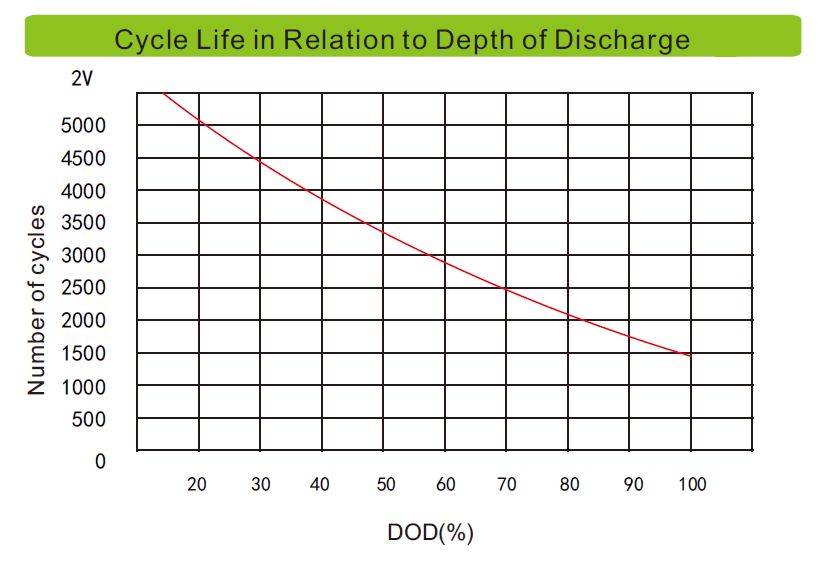
So the first thing to understand from the graph above is what DOD(%) is. DOD stands for Depth of Discharge and is a measure of the amount of power that has been taken out of a battery. It is the inverse of the other popular battery measurement, State of Charge (SOC). So a DOD of 100% is a flat battery, while a SOC of 100% is a fully charged battery.
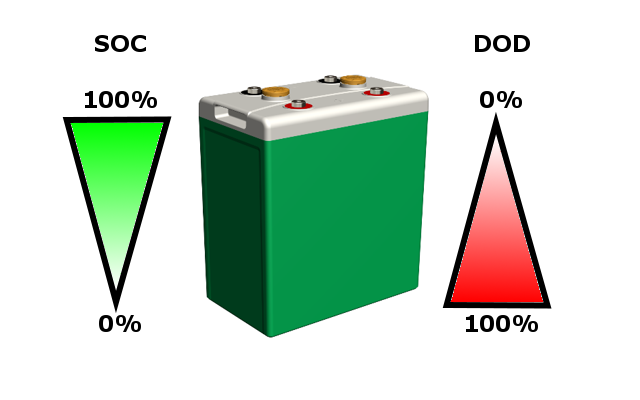
So now that we have clarified what DOD(%) is, we can study the red line on the graph and see what number of discharge/charge cycles we will be able to achieve if we limit the level of DOD to say 50% (3300 cycles) or 60% (2750 cycles).
At this stage we also need to mention PSOC – Partial State of Charge. Normally with Lead Acid batteries, you need to fully charge the battery otherwise a build-up of lead sulphate crystals occurs (sulphation) which makes it more difficult to charge the battery and reduces its capacity to hold a full charge.
The good news is that with Lead Carbon batteries there is little or no sulphation and so the PSOC concerns, normally associated with Lead Acid batteries, are not an issue. In practice, this means that should you have a particularly long day cruising and there is not enough solar to fully charge the batteries, you will not do any damage to the battery bank. This is particularly important for a continuous cruising boat, where during the winter you will very rarely achieve full charge on the battery banks.
So this raises the question of how to charge the battery bank when you are away from a marina. In the summer, with the amount of solar panels we intend to have, it should be possible to rely almost 100% on solar to keep the batteries topped up. However, at other times we will need to run the generator to recharge the batteries.
There are two types of generators; DC output and AC output. The DC output type is identical to the setup you have in your car, where the alternator creates a higher voltage than the battery voltage and current flows into the battery. Initially, the current flow is high but then as the battery starts to reach 80-90% SOC, the current reduces and it takes a long time to go from 90 to 100%. Running the diesel generator for this long period is inefficient and it is better to stop the generator and use solar to top up the last 10%.
With an AC output generator (the type we will have on “Old Nick”), the generator creates 230v AC (mains) power and this goes to the Victron Quattro adaptive, 4 stage battery charger. This has some key advantages, over using a DC alternator to charge the batteries:
- The Quattro can generate a higher charging current than the DC output from a typical alternator
- The 4 stage battery charger can be configured for different battery charging profiles i.e. Lead Acid, Lead Carbon, Lithium, etc. rather than the alternator’s “one charge fits all” approach
- The visibility of the charging process and battery state is improved with the Quattro’s smarter charging system
Even with the smarter charging of the Quattro, there still comes a point where it is more efficient to switch off the generator and let solar do that final top-up.
Armed with this information about the best way to maintain and look after our Lead Carbons, Ortomarine will help make the whole process easier by programming their innovative colour touch screen controller to automatically start the generator when the SOC drops down to 55% and then switch the generator off when the SOC gets back up to 88.
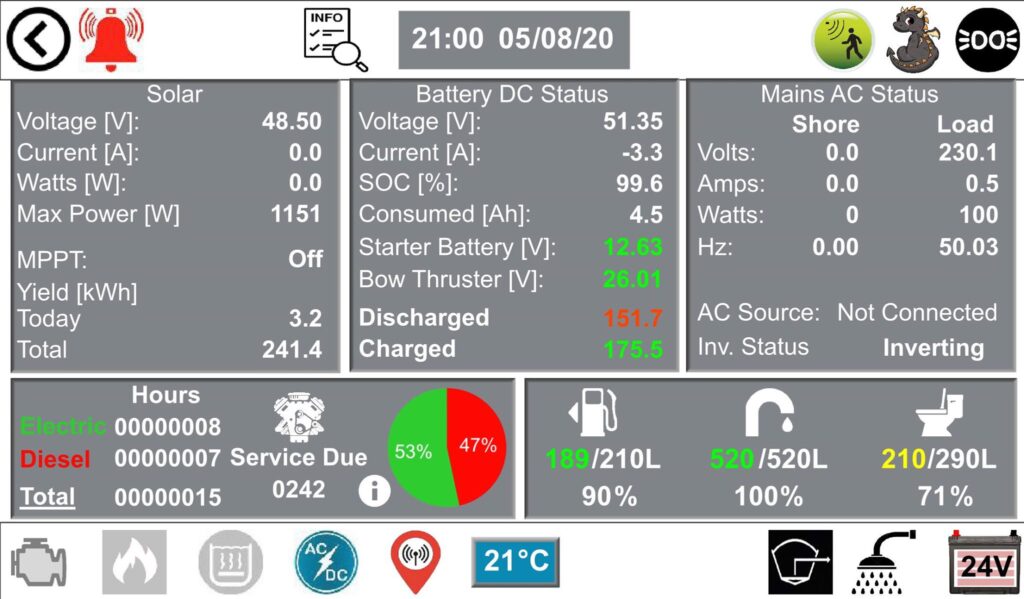
We will of course monitor our batteries very closely, but knowing that the Ortomarine controller is keeping an eye on things, will certainly give us peace of mind and avoid any potentially damaging low DOD situations.
We have covered quite a lot in this post, and hopefully it has all made sense, but if you have any questions or observations please add a comment below or use the “Contact Us” page.

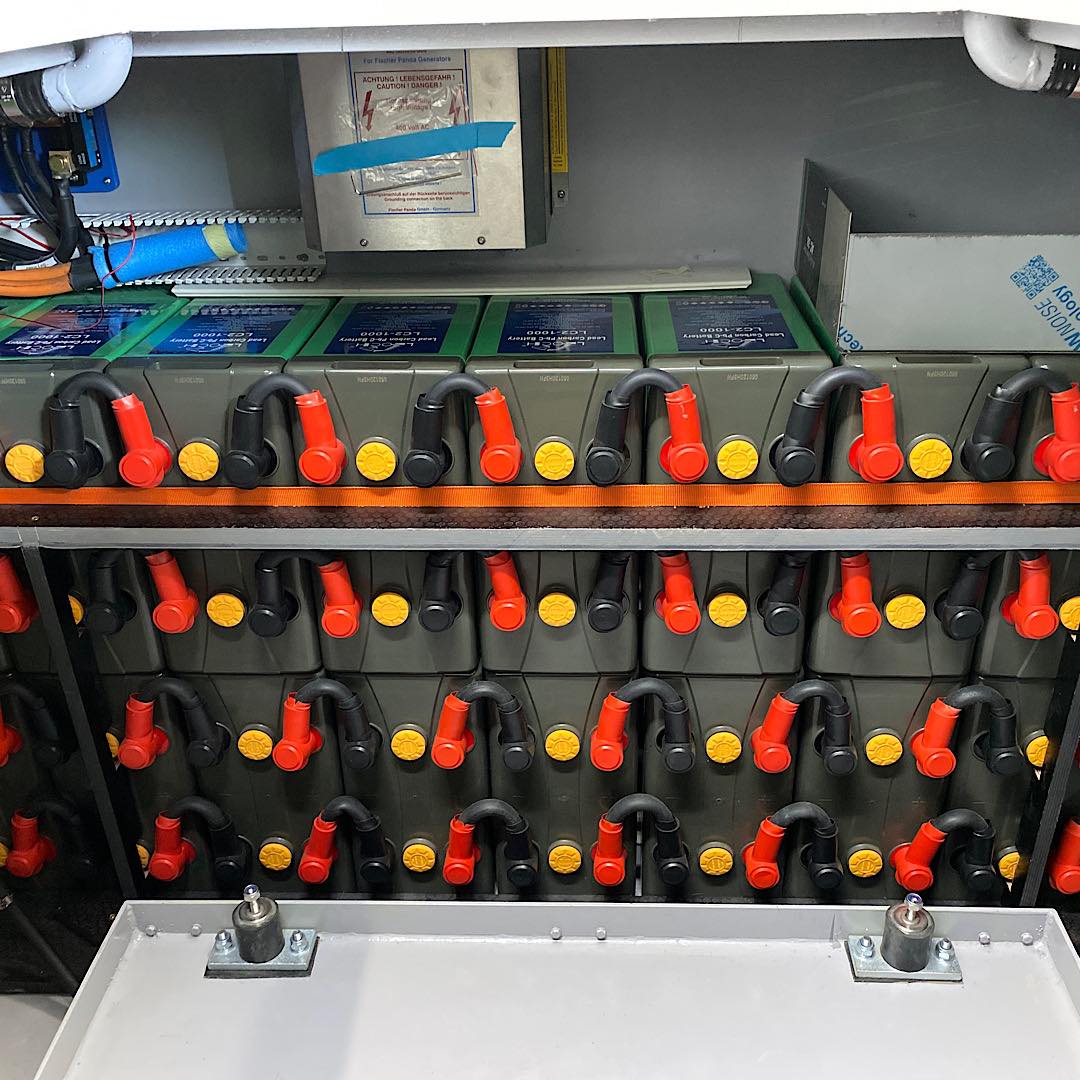
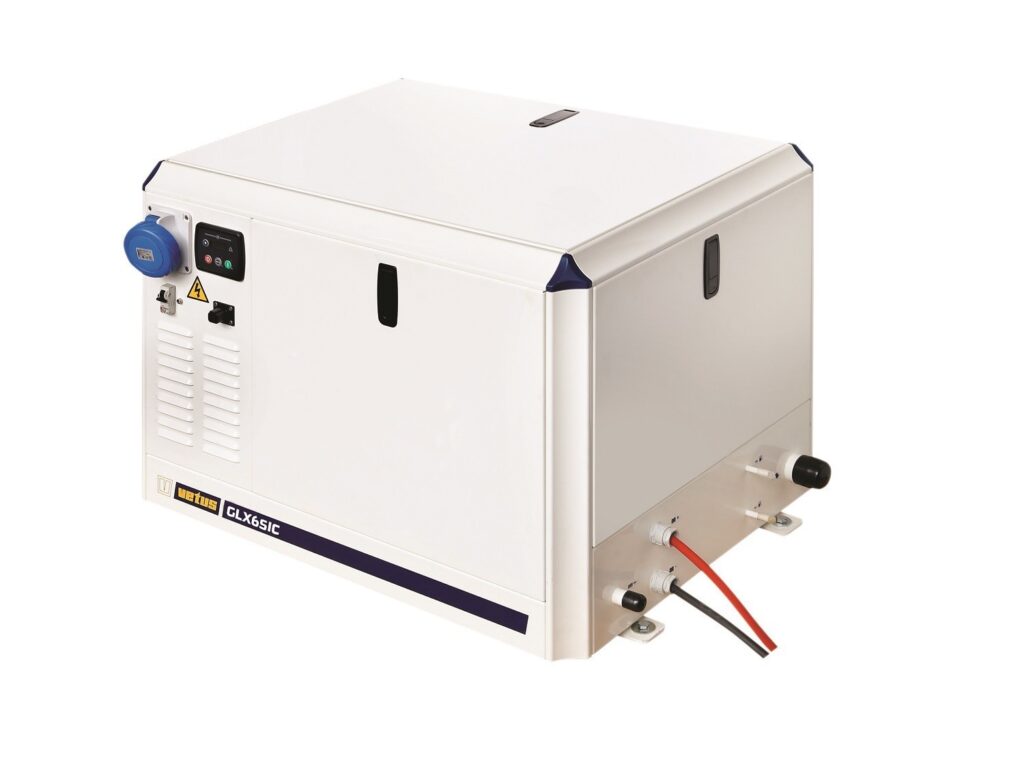
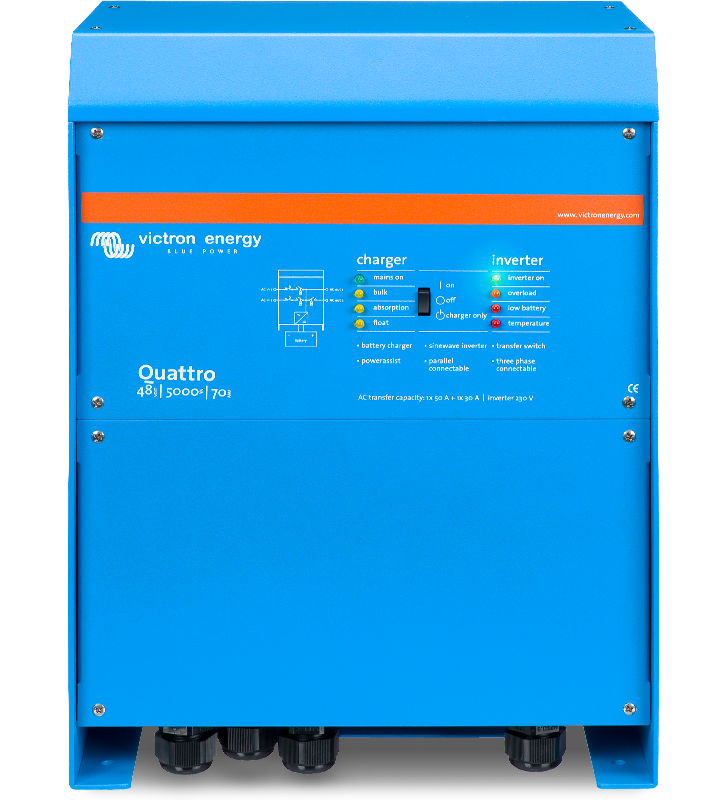
I will be watching with great interest. 🔎😁. The claims made by the manufacturers and the price makes these batteries very appealing. One of Touted characteristics about these batteries is that they charge much quick than regular lead batteries is that they charge much quicker comparatively. What your opinions on this? Is it a noticeable difference?
Hi Gavin,
At the moment, all of our decisions and the information in the blog post are being based on manufacturer’s specs and feedback from existing lead carbon users, but very soon I will be able to provide my own “real life” performance figures and feedback. “Old Nick” is scheduled for completion in November, so not long to wait!
I will be making all of our recorded battery discharge and charging data available and publishing more posts on our experiences.
Best regards
PAUL
Just installed 4 x 130ah lead carbon on roobarb. No usage stats yet. Will probably need solar to make the best of them while cruising.
You should have no trouble charging them up while cruising and they are much more resilient to partial state of charge (PSOC) so it you did not fully charge them everyday during your holiday, it would not do them any harm, and as soon as you are back in the marina you can fully charge them.
I’ve recently upgraded our battery bank from conventional lead-acid batteries (12 x 12V/110Ah organised as 72V/220Ah) to 12 x Leoch lead/carbon 12V/130Ah (72V/260Ah) which were identical size but somewhat heavier. This meant that I could just drop them into the existing battery boxes with minimal hassle (though quite a lot of physical effort). Several multi-day cruises have shown them to be significantly better than the old batteries, giving a much enhanced range. Several times previously we would have to use the on-board generator to top up the charge to get us to our destination but haven’t once needed to do that with the lead/carbons. Really pleased with them. Interesting to note that they seem to be somewhat higher in voltage than the lead/acid, ranging from above 13V fully charged to below 12V if I really use a lot of the capacity.
That is good to know, what boat and engine do you have? Did you have any issues going to 72v ?
Hi Paul, the boat is called Malaya. Built in 1926 as a leisure narrow boat, we’ve spent six years restoring her which included removing the (ludicrously big) 37.5hp diesel and replacing it with a 15kW electric motor.
I recently wrote a series of articles for the Thames Vintage Boat Club about the boat and our restoration and this is my offering for the final part describing the technical aspects, though it was considerably reduced for the actual magazine:
https://documentcloud.adobe.com/link/review?uri=urn:aaid:scds:US:0e7e5225-f4f0-4533-9853-ec6af4d8ee60
No particular issues with 72V though, as I emphasise in the article, safety is a significant concern. It passed the BSSC first time though, so the examiner was happy with my wiring.
Just one warning, the quoted number of cycles for lead-carbons is very much a “best case” under lab conditions; unless you’re *very* careful about charging the real life could be less than half this. There is more detail about this in the Northstar Blue manual, Leoch give no useful details.
Thanks for the warning, but I am curious as to why you are so sceptical of the quoted number of cycles?
Also what is the difference between lab conditions and real life? Surely a discharge is a discharge, whether in a lab or on a boat.
I’ll have a look at the Northstar manual and see what they say.
I’m sceptical because that’s exactly what the Northstar manual says, it goes into a lot of detail about how to treat the batteries and what happens if you don’t use an ideal charging regime.
Don’t get me wrong, they should still have much longer life on a narrowboat than any other lead-acid battery. But unless you use a *really* intelligent alternator controller that monitors current as well as voltage to track SOC — the Wakespeed WS500 is the only one I’m aware of that does this — and take similar care with any solar and mains charging, you’re unlikely to see the number of cycles on the data sheet. This also needs alternator(s) configured to use an external field.controller, which most aren’t — Balmar alternators do but are fiendishly expensive, alternatively Beta Marine can convert some of their house battery alternators to do this.
Hi Ian,
I have had a good look at the Northstar Blue batteries and although they use the same Lead Carbon technology as the Leoch batteries we will have on “Old Nick”, they are designed to be 12v starting or leisure batteries for boats/RVs. This means that their internal design is optimised to provide the high currents required for cold cranking (starting), which does reduce the number of life cycles.
The Leoch LC2-800 (2V) batteries we will be using are designed for the renewable energy markets, uninterruptable power supplies and other off-grid type applications. They would not be good for starting a diesel engine, but will happily provide enough power to drive our 10KW electric engine and will be a massive energy store for our kitchen and living appliances.
Also we will not be charging them through a normal engine driven (DC) alternator, but rather through a Victron Quattro 48v battery charger/inverter, that has an intelligent multi-stage charging system, smart shunt current sensing on all battery loads and the correct battery charging profile setup for the Leoch lead carbons.
Of course all of this is theoretical at the moment, but both Leoch and Victron are well known and respected companies and I am confident that our design will correctly track SOC and ensure that we never go below 60% DOD. I will hopefully be able to gather enough real life data, once “Old Nick” is launched, to give others confidence in using lead carbons for electric propulsion.
Cheers
PAUL
It’s not the blue, it’s the blue+ which are intended for partial SOC applications like boats:
https://www.northstarbattery.com/blue-plus-battery
As far as I’m aware the Quattros only use voltage to terminate charging, like the Balmar battery controllers. Still far better than most solutions, but doesn’t use current termination — there’s a lot of info about this if you go looking for it. Go and read up on the WS500 reviews and comments if you want to find out more.
I do agree that the Leoch lead-carbons are probably the best choice right now, LiFePO4 are still too expensive of you want a decent size bank, and flooded 2V cells take a lot of looking after and are even more fussy about things like equalisation.
How is the generator cooled? Fan or skin tank out of interest presumably it’s not 4 stroke!
TIA
Ade
Hi Ade,
The generator is raw water cooled, both for engine and exhaust. We do have a skin tank but this is used to cool the electric engine.
There is a risk with raw water cooling of the inlet filter getting clogged up with weed or other water debris, but as the generator will be running fairly infrequently and we can choose when and where to run it, I don’t expect this to be an issue.
Here is the blog post on the generator…. https://thesumpnersafloat.com/2020/09/23/the-other-half-of-a-hybrid/
Best regards
PAUL
I posted to early! That was the next post and I did see that after posting the comment above.
Thanks for the further explanation.
I’m pushing on with your posts to get up to date.
Cheers
Ade
I have a stationary ESS (energy storage system for my off grid home here in sunny Thailand. I am using a recently purchased set of lead carbon batteries which gives me 750Ah at nominal 48V.
I am surprised at the charge acceptance rate of these batteries.
I notice in the manufacturers data sheet, there is a requirement to fully discharge these batteries every six months then recharge them to precondition them.
Have you ever come across this requirement?
Hi Terry – the quick answer is no. Paul will get back to you to enhance that answer a bit later.
Hi Terry – could you possibly send a link to the data sheet for your batteries?
The data sheet comes with each battery. I don’t know if it is on the companies web site. I will get back to you later. Tis’ night time here now. The company is CSPower in China.
The correct name of the “data sheet” I referred to is “User Manual”.
It is not in their list of downloadable documents.
I have re-read the user manual which comes with each battery and have identified the 100% discharge requirement.
This requirement only applies to lead carbon batteries in storage and reads as follows:-
Storage and Auxiliary Charge.
During storage, the battery will discharge itself, place the battery in a cool dry environment.
Auxiliary charge at least once every three months, 100% full discharge and charge must be done every 12 months.
This is not something I have come across before so maybe it is specific to lead carbon batteries.
I hope others may find it useful.
OK. That makes sense now. When we are going away from the boat or in a marina, we switch our charging regime over to our eco mode – as described here
https://thesumpnersafloat.com/2021/02/06/its-not-easy-bein-green/
This keeps exercising the batteries, so I’m not sure we’d ever need to do this?
Quote
“This keeps exercising the batteries, so I’m not sure we’d ever need to do this?”
No you wouldn’t
I think this is aimed at the retailer who may have a number of batteries in stock for a very extended period. The clarity of Chinese English is sometimes a bit of a challenge.
I do like the idea of autonomous switchover between marina supply and solar/battery. I bet the marina supply is not cheap.